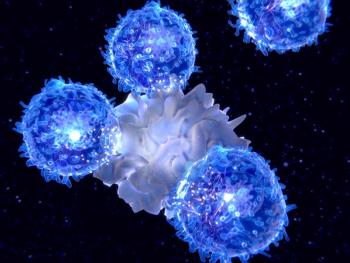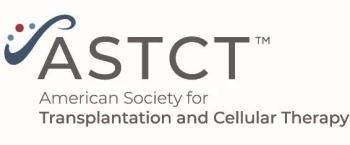
A Better Risk Model for DLBCL Patients?
Researchers developed an enhanced genomic model combining clinical factors and select gene mutations in order to better predict survival in patients with DLBCL who were administered first-line R-CHOP.
Researchers developed an enhanced genomic model combining clinical factors and select gene mutations in order to better predict overall survival (OS) in patients with diffuse large B-cell lymphoma (DLBCL) who were administered first-line R-CHOP (rituximab plus cyclophosphamide, doxorubicin, vincristine, and prednisone). Results of the study (
DLBCL is characterized by recurrent translocations and somatic mutations, and its prognosis is associated with clinical features, cell of origin (COO), and genetic aberrations. In the current study, researchers led by Joo Y. Song, MD, of City of Hope in Los Angeles, determined whether somatic mutations were significantly linked to OS in DLBCL patients treated with R-CHOP. They also explored whether these mutations can be combined into a model that better predicts for OS.
The study involved 340 patients diagnosed with de novo DLBCL between 2000 and 2016. The researchers employed a special targeted panel of 334 genes-including frequently mutated genes in B-cell lymphoma-to collect DNA that was then sequenced using Illumina HiSeq 2500. The samples were analyzed for BCL2, BCL6, and MYC rearrangements via immunohistochemistry (IHC) and fluorescence in situ hybridization (FISH) analysis. The investigators then estimated OS statistically and performed multivariant modeling of OS, incorporating clinical features, IHC, COO (NanoString), FISH, and mutation status of the most commonly mutated genes. The researchers performed LASSO regression to choose for significant variables and variable coefficients. They calculated risk scores by means of fitted models and ascertained the discriminatory ability of the models. In the final model, they established three risk groups by stratifying risk scores.
Overall, complete clinical and sequencing data were collected for 199 patients (median age, 60 years). The researchers found that germinal center B-cell phenotype (GCB) was more common than the activated B-cell phenotype (69% vs 26%), with 5% unclassified by COO. The most frequently mutated genes were KMT2D (31%), CREBBP (21%), and TP53 (20%). Significant variables selected by LASSO included factors in the International Prognostic Index (IPI), FISH analysis, and 3 mutated genes (KMT2D, PIM1, and MEF2B).
The researchers worked out a formula utilizing the following individual factors: increased lactate dehydrogenase (LDH); age ≥ 60 years; presence of extranodal sites; stage III or more; male gender; double-hit status; and mutations in KMT2D, PIM1, and/or MEF2B. Of note, although clinical features were incorporated into prior scores, the addition of these three mutations was novel, and these genes were not previously identified as contributing to adverse features of disease.
The three-risk group model (m3D-IPI) and its coefficients were better at distinguishing OS vs IPI alone. The researchers then constructed a simplified risk model with the same variables by assigning one point to each variable present, with the results substantiated in an independent cohort of DLBCL.
“This model identified a very high-risk group that might benefit from clinical trials and novel therapies,” concluded the researchers.
Newsletter
Stay up to date on recent advances in the multidisciplinary approach to cancer.

















































































